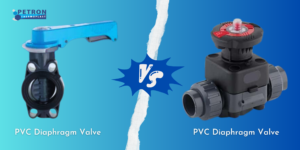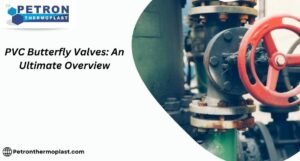Introduction
Polyvinylidene fluoride (PVDF) is a synthetic polymer belonging to the family of fluoropolymers. It is a high-performance plastic known for its excellent chemical resistance, thermal stability, electrical properties, and versatility. PVDF is derived from vinylidene fluoride monomers and is characterized by a high degree of fluorination.
Here are some key points about PVDF:
1. Chemical Formula:
The chemical formula for PVDF is (C2H2F2)n, where “n” represents the number of repeating units in its polymer chain.
2. Structure:
PVDF has a semi-crystalline structure, which means it has both crystalline and amorphous regions. This structure contributes to its mechanical and thermal properties.
4. Applications:
- Chemical Processing: PVDF is used in pipes, fittings, and linings in chemical processing industries.
- Electrical and Electronics: It is used in Electrical Insulation, wiring, capacitors, and other electronic components.
- Sensors and Actuators: The piezoelectric properties make PVDF suitable for use in sensors, actuators, and devices that convert mechanical energy into electrical signals.
- Membranes: PVDF membranes are used in filtration processes.
- Medical Devices: PVDF is used in certain medical applications due to its biocompatibility.
5. Processing Methods:
PVDF can be processed using various techniques such as injection molding, extrusion, and solvent casting, allowing for the manufacture of a wide range of products.
Due to its combination of valuable properties, PVDF finds applications in diverse industries, including chemical processing, electronics, aerospace, energy, and medical fields.
Properties of polyvinylidene fluoride
Polyvinylidene fluoride (PVDF) is a versatile polymer with several notable properties that make it suitable for various applications. Here are some key properties of polyvinylidene fluoride:
1. Chemical Resistance:
PVDF exhibits excellent chemical resistance to a wide range of chemicals, acids, and solvents. This makes it suitable for applications where exposure to corrosive substances is a concern.
2. Thermal Stability:
PVDF has a high melting point and good thermal stability, allowing it to maintain its properties at elevated temperatures. This makes it suitable for use in high-temperature applications.
3. Electrical Insulation:
PVDF is known for its excellent electrical insulation properties. It is often used in electrical and electronic applications where a high level of insulation is required.
4. Mechanical Strength:
PVDF possesses good mechanical strength and toughness. It can withstand mechanical stresses and impacts, making it suitable for applications that require durable PVDF materials.
5. UV Resistance:
PVDF has good resistance to ultraviolet (UV) radiation, which makes it suitable for outdoor applications where exposure to sunlight is a factor.
6. Weather Resistance:
The polymer is resistant to weathering, including resistance to environmental factors such as rain, snow, and atmospheric pollutants. This property contributes to its use in outdoor applications.
7. Low Density:
PVDF has a relatively low density, which contributes to its lightweight nature. This property is advantageous in applications where weight is a critical factor.
8. Piezoelectricity:
PVDF is piezoelectric, meaning it can generate an electric charge in response to mechanical stress. This property is utilized in sensors, actuators, and other devices.
9. Transparency:
PVDF is transparent to certain wavelengths of radiation, especially in the infrared region. This property is advantageous in certain optical applications.

Characteristics of polyvinylidene fluoride
Certainly! Here are some key characteristics of polyvinylidene fluoride (PVDF):
1. Chemical Structure:
PVDF is a polymer made up of repeating units with the chemical formula (C2H2F2)n. It is a semi-crystalline polymer with a high degree of fluorination.
2. High Chemical Resistance:
PVDF is highly resistant to chemicals, acids, and solvents, making it suitable for applications where exposure to corrosive substances is a concern.
3. Thermal Stability:
PVDF has a high melting point and good thermal stability, allowing it to maintain its properties at elevated temperatures. It can be used in applications that involve high temperatures.
4. Piezoelectricity:
One of the unique characteristics of PVDF is its piezoelectric property. It can generate an electric charge in response to mechanical stress, making it useful in sensors, actuators, and devices for measuring pressure or acceleration.
5. Electrical Insulation:
PVDF exhibits excellent electrical insulation properties, making it suitable for use in electrical and electronic applications where insulation is critical.
6. Mechanical Strength:
PVDF has good mechanical strength and toughness. It can withstand mechanical stresses and impacts, contributing to its durability.
7. UV Resistance:
PVDF is resistant to ultraviolet (UV) radiation, making it suitable for outdoor applications where exposure to sunlight is a consideration.
8. Weather Resistance:
PVDF is resistant to weathering, including rain, snow, and atmospheric pollutants. This characteristic contributes to its use in outdoor applications.
9. Low Density:
PVDF has a relatively low density, providing lightweight properties. This is beneficial in applications where weight is a critical factor.
10. Transparency to Infrared Radiation:
PVDF is transparent to certain wavelengths of infrared radiation, making it useful in certain optical applications.
Chemical capability of polyvinylidene fluoride
Here are some details regarding the chemical capability of PVDF:
1. Resistance to Acids and Bases:
PVDF is generally resistant to a variety of acids and bases. It can withstand exposure to both strong acids and strong bases without undergoing significant degradation.
2. Chemical Inertness:
PVDF is chemically inert, meaning it does not react with many chemicals. This property makes it suitable for applications where the material needs to remain unchanged in the presence of various substances.
3. Solvent Resistance:
PVDF is highly resistant to many solvents, including common organic solvents. This resistance is valuable in applications where the material comes into contact with solvents, such as in chemical processing and filtration.
4. Corrosion Resistance:
PVDF is known for its corrosion resistance, making it suitable for use in aggressive chemical environments. It is often used in the construction of pipes, fittings, and linings for conveying and containing corrosive substances.
5. Resistance to Hydrocarbons:
PVDF demonstrates resistance to hydrocarbons, making it suitable for use in environments where exposure to oils and fuels is a consideration.
6. High Purity and Non-reactivity:
PVDF is considered a high-purity material, and its non-reactive nature makes it suitable for applications in which the material must not introduce contaminants or react with the substances it comes into contact with.
7. Biocompatibility:
PVDF is biocompatible, which means it is well-tolerated by living tissues. This property makes it suitable for certain medical applications, such as in implants and devices.
Chemical sensitivity of polyvinylidene fluoride
Polyvinylidene fluoride (PVDF) is known for its chemical inertness and resistance to a wide range of chemicals, but it is not universally resistant to all substances. While PVDF is generally considered chemically stable, there are certain conditions and chemicals that can affect its properties.
Here are some considerations regarding the chemical sensitivity of PVDF:
1. Chemical Resistance:
PVDF is highly resistant to many chemicals, including acids, bases, and organic solvents.
It is particularly known for its resistance to strong acids and bases, as well as various organic solvents.
2. Temperature and Concentration:
The chemical resistance of PVDF can be influenced by factors such as temperature and concentration. Higher temperatures and more concentrated solutions may affect its performance.
3. Halogenated Solvents:
PVDF is generally resistant to many solvents, but some halogenated solvents, such as chlorinated solvents, may have a mild swelling effect on PVDF.
4. Strong Oxidizing Agents:
PVDF may be sensitive to strong oxidizing agents. While it is resistant to many chemicals, substances like concentrated nitric acid and other powerful oxidizers may have an impact on its performance.
5. Certain Hydrocarbons:
Although PVDF has good resistance to hydrocarbons, certain highly aromatic hydrocarbons may affect the polymer.
6. Conditions of Use:
The specific conditions under which PVDF is used, including temperature, pressure, and the presence of other substances, can influence its chemical sensitivity.
7. Consideration for Specific Applications:
For critical applications, it is essential to verify the compatibility of PVDF with the specific chemicals and conditions it will encounter. This may involve conducting compatibility tests under relevant operating conditions.
8. Biocompatibility:
While PVDF is generally considered biocompatible, its suitability for medical applications may depend on specific use cases and the particular requirements of the medical device or implant.
The chemical sensitivity of PVDF can vary depending on the grade and formulation of the material.
Conclusion
The properties and characteristics of polyvinylidene fluoride (PVDF) position it as a highly versatile and valuable material in a variety of industries. Its chemical resistance to acids, bases, and solvents, coupled with exceptional thermal stability, makes it a reliable choice for applications in harsh environments. PVDF’s low density, UV resistance, and weather resistance contribute to its suitability for outdoor applications. As a result of its biocompatibility, it finds use in certain medical devices. The ease of processing further enhances its appeal in manufacturing processes. In essence, the diverse range of properties and characteristics inherent in PVDF positions it as a material of choice for applications spanning from chemical processing and electronics to medical and beyond.
FAQs
Q1: What is PVDF?
Ans: PVDF stands for polyvinylidene fluoride. It is a synthetic polymer known for its exceptional chemical resistance, thermal stability, and electrical properties.
Q2: Where is PVDF commonly used?
Ans: PVDF finds applications in various industries, including chemical processing, electronics, aerospace, medical, and more. It is used in pipes, fittings, electrical components, sensors, and medical devices.
Q3: Is PVDF environmentally friendly?
Ans: PVDF is generally considered environmentally friendly. It is not known to release harmful substances during use, and its durability contributes to longer product lifecycles.
Q4: How does PVDF compare to other polymers?
Ans: PVDF stands out for its combination of chemical resistance, piezoelectricity, and thermal stability. Compared to other fluoropolymers, it is often more cost-effective.
Q5: How is PVDF processed in manufacturing?
Ans: PVDF can be processed using common techniques such as injection molding, extrusion, and solvent casting, providing flexibility in manufacturing processes.




